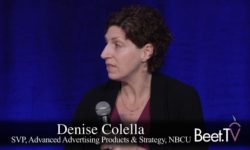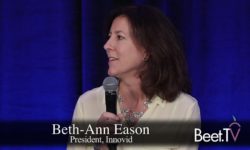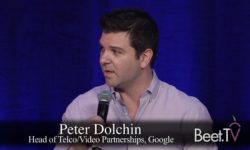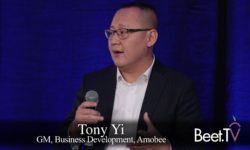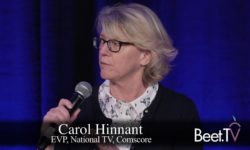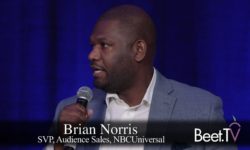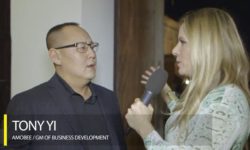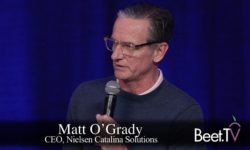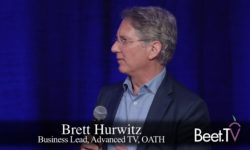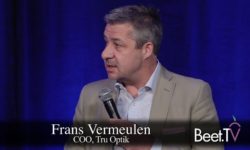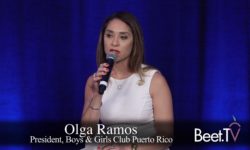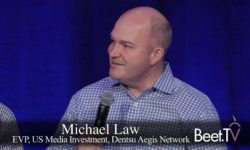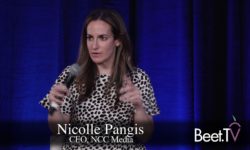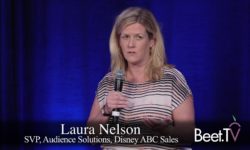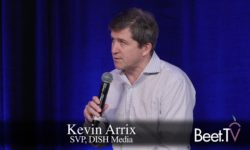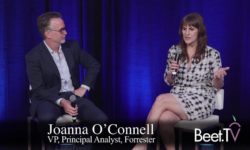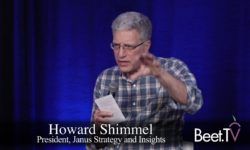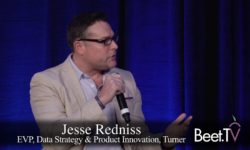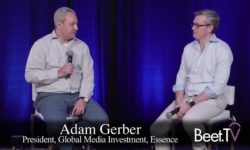SAN JUAN, Puerto Rico—There was no playbook for the advertising and media community in Puerto Rico to help itself—much less consumers—deal with Hurricane Maria in 2017. But until such a template exists, the lessons related by AT&T, Hearts & Science, Procter & Gamble and Telemundo at Beet Retreat 2018 provide more than an ample starting place for the future.
AT&T used a local meteorologist/social influencer to help inform and people prepare for the hurricane, while providing journalists with free WiFi data cards afterward and using satellite television programming time to inform children sidelined by school shutdowns. P&G provided free mobile laundry services so that people had clean clothes to wear. Telemundo took to using a live Facebook feed to communicate news developments while hosting gatherings of friends and competitors alike in the industry.
Beet.TV’s efforts to galvanize support for Puerto Rico relief efforts continue on February 5 at Xandr/AT&T in Manhattan. Accompanied by advertising and media executives, the program will explore fund-raising and other charitable initiatives to further support the Boys & Girls Clubs of Puerto Rico.
“The media landscape was basically starting over again,” Andres Claudio, MD of Hearts & Science/Omnicom, Puerto Rico, said during a Beet Retreat session titled Puerto Rico Media Transformed by Hurricane Maria and moderated by former GroupM executive Phil Cowdell. “Imagine in New York City if you have no power, no signals, no cell phones, nothing. At least you have another state around you.”
While brands have a responsibility to understand consumer needs, “we have a social responsibility” as well, said Melissa Burgos, Marketing Director, USVI/Puerto Rico, AT&T Mobility. In the case of Maria, that responsibility started with the mobile service company helping people prepare for what lay ahead. AT&T leveraged the effort by using a local meteorologist who had a substantial social media following.
“What we did not expect, besides the fact of what happened after the hurricane, was that influencer became the top trending person within all possible influencers,” said Burgos.
“Basically we were in the dark ages” in terms of the ability to communicate through everyday media, with the exception of AM radio, said Freddie Hernandez, Site Leader, P&G Puerto Rico. When the company saw images of people washing their clothes in rivers and other waterways, P&G knew it had to do something.
“There’s a lot of health issues related to using non-purified water to clean your clothes,” said Hernandez. And while P&G had learned from such U.S. natural disasters as hurricanes Katrina and Sandy, it had no logistical way to bring its Tide Loads of Hope community service from the mainland. “We decided to create our own asset” in the form of a Coach bus transformed into a laundromat with 12 combo units of washing and drying machines that assisted more than 2,000 families.
“It’s incredible the reaction of the people,” said Hernandez. “You take for granted what you have. People were just crying when they would see the bus getting to a town and people would be wearing clean clothes for the first time in about three weeks.”
Telemundo had been broadcasting “all the way up to the storm” but was forced to shut down early on the first morning that Maria made landfall, according to Jose Cancela, President of Telemundo/NBCU Puerto Rico. “When we cranked back up we were really broadcasting to the States because there was no power here. Whatever cell phone probably you had you probably used it up,” said Cancela. Reporting news live via Facebook was “for four days how we were broadcasting. Radio became the media of the day for a number of months.”
From the onset of Maria, advertising and media competitors pulled together, initially using Telemundo as a base for meetings. Meanwhile, Cancela credited Nielsen for doing “a great job in bringing their panel back on track. Without that measurement, our currency was zero and it wasn’t until May of this year that they were finally able to bring it on track. But during the whole process, they really kept the broadcast community and the agency community very much informed in getting their panel back up.”
One exception to media outages was satellite TV for those fortunate to have a source of electricity, said Burgos. Since all schools were either shut down, destroyed or being used for community services, “we had children at home doing nothing, so there was a need to educate or entertain those children.”
So AT&T organized a tour of education professionals under the auspices of DirecTV and used programming time to provide useful content to kids in 10 different towns. “They were dying for information,” Burgos said.
This video was produced in San Juan, Puerto Rico at the Beet.TV executive retreat. Please find more videos from the series on this page. The Beet Retreat was presented by NCC along with Amobee, Dish Media, Oath and Google.







